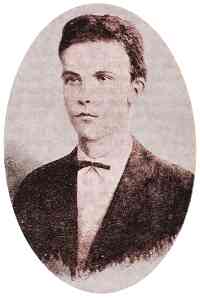I tend to think about the US embargo against Cuba in strictly humanitarian and political terms. From my point of view, it’s an obvious crime against innocents, and it’s a political disaster for the US government and Cuban-Americans.
A talk by Rachel Bruhnke from the Cuba-US Sustainability Project points clearly to the fact that the embargo also constitutes an environmental crime not just against Cubans, but against civilization at large.
It’s not just that the American people were prevented from seeing themselves how Cubans responded to their sudden loss of oil after the fall of the Soviet Union, or how the public health sector has continually responded to disasters and emergencies so successfully (especially by comparison to their wealthy North American neighbors).
It seems that Americans are just not supposed to see the “real” Cuba, and still, all factors indicate that the American people oppose the embargo, or the use of hostile rhetoric, both of which the Bush administration clearly supports, against their small neighbors. (Most of the American population still doesn’t know about terrorist Posada Cariles and his close friends in high places.)
When you consider the vast amount of travel required to get goods into Cuba, from half-way around the world sometimes… the added cost of manpower, time and fuel, the embargo’s environmental crime becomes apparent.
“To inhibit the progress of a dialogue on environmental solutions is a crime,” says Bruhnke, suggesting that “the example of Cuba is needed in order to appreciate the possible.”
Traditional hostilities, in the form of recently expanded travel restrictions, have also prevented scientific exchanges in the area of environmental management of water resources, and on the very important topic of renewable energy. Sure, this hurts Cubans, but it also hurts… everybody, including Americans.
How much are we willing to hurt ourselves in order to hurt Cuba? How much are we willing to hurt the world?
The lessons of Cuba’s transition out of her “special period,” are valuable to all, and can provide inspiration where it is gravely needed. A recent documentary film from The Community Solution, titled “The Power of Community: How Cuba Survived Peak Oil,” begins to present those lessons, and that inspiration.
Among the homegrown innovations (for which Cubans are already known) was their development of bio-pesticides and bio-fertilizers to substitute for petrochemical products (according to The Community Solution, today Cuba uses 21 times less pesticide than before the “special period”). They also improvised an island-wide system of public transportation that included everything from aging Studebakers to converted trucks and tractor-pulled people movers.
In the farms, they replaced heavy machinery with oxen, and developed systems that would limit the need for long deliveries whenever possible. It’s estimated that up to 50 percent of the vegetables served in Havana today are grown in the city.
And, yes, they managed to maintain free education and health care, a fact that continues to irk conservatives across the lake. With 2 percent of the population of Latin America, Cuba has 11 percent of all the scientists. And there are now 50 colleges and universities throughout the island.
My Cuban brothers and sisters across the Straits have done the seemingly impossible to survive and care for their children. The test of adversity is not new to Cubans.
Peace.
 In November 1871, 18-year-old Cuban history icon and all-around superhero José Martí wrote about the death penalty in his private notebook:
In November 1871, 18-year-old Cuban history icon and all-around superhero José Martí wrote about the death penalty in his private notebook:
